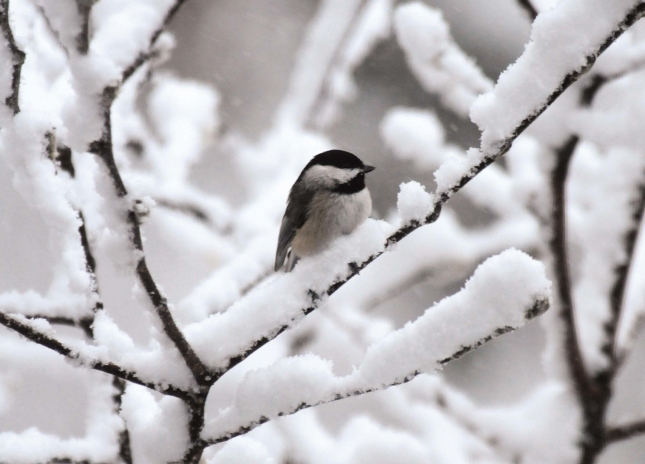Winter Nutrition Fun Facts

Winter Nutrition Fun Facts
This time of year we often hear, they’re eating me out of house and home! Bird feeders can be an important food source during winter. When severe weather impacts wild food supplies, some species of birds will turn to feeders as a critical food resource. It is during these times that feeders play their most vital role. If a storm is of long duration or extreme impact, a feeding station may mean the difference between life and death for these birds.
When the temperature falls below 10 degrees F, chickadees with access to feeders have a higher winter survival rate of 69% versus a 37% survival rate for populations without access to feeders. Chickadees, also, have to eat 20 times more food each in the winter as they do in the summer.
Lipids are the most concentrated energy source that a bird can consume. Lipids are substances such as a fat (like suet), oil (found in seeds) or wax (usually from tree fruits). Storage pools of fat reserves are the primary energy supply that fuels a bird between meals, through cool winter nights. Songbirds and other small passerines may use up to ¾ of their fat reserves in one night.
As opposed to fats, carbohydrates are an essential form of energy for juncos, sparrows and other ground-feeding birds. They prefer to eat quantity over quality being able to pull useful energy and the nutrients they need from carbohydrates.They gobble up large quantities of high-carb foods like millet and sit in protective cover and digest.
The top recommended fatty foods for birds to meet energy cravings are premium black oil sunflower, peanuts, sunflower chips, and blends with nuts, mealworms, and fruit. Remember low fat for you and high fat for your birds. Happy Birdfeeding!
(Kathy and her husband, John, own and operate the Wild Birds Unlimited store, located in Billings and at www.wbu.com/billings. She is a Certified Bird Feeding Specialist, and is past president of the Yellowstone Valley Audubon Society).

